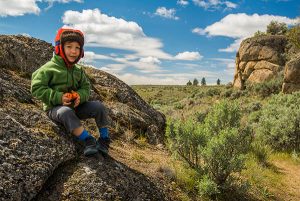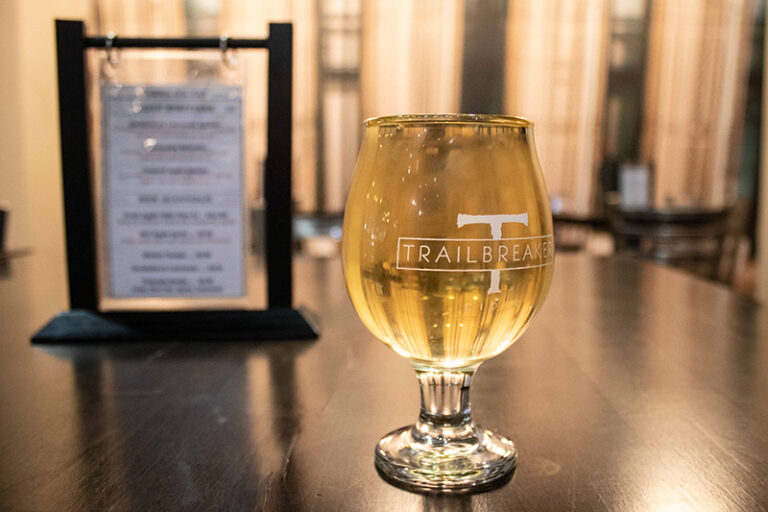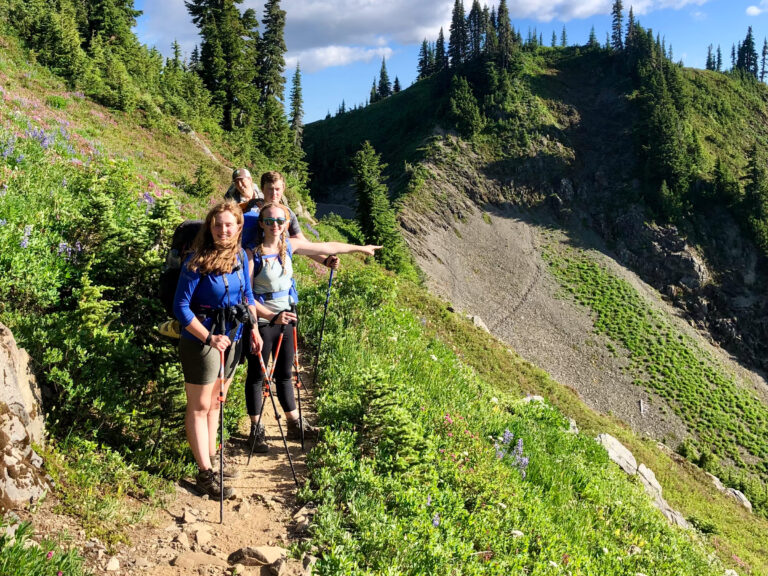During the summer, Lake Roosevelt National Recreation Area’s 600 miles of shoreline attract droves of boaters to the otherwise-dry coulee country of Eastern Washington. But when the houseboats and Jet Skis have long been dry docked, the lake and its neighbors make an attractive backdrop for snow-free winter exploration, the stark, serene landscape attracting the snow-weary and sun-starved among us.
The two hikes here make a fine introduction to coulee country winter wandering.
Steamboat Rock
The cataclysmic Ice Age Floods that carved the Columbia Plateau made one of the biggest impressions, physically and visually, at Steamboat Rock in the Grand Coulee area. The monolith forms the centerpiece of the 3,522-acre state park of the same name south of Coulee City.
For a hike of a little more than three miles, leave the park’s day-use area and ascend to the base of the butte among head-high sagebrush and winter-bare shrubs. Climb a steep, talus-slick cleft in the rock –
which may require four points of contact – to reach the top of the butte. Although maps show a hiking trail that circumnavigates the butte, hikers will find only jackrabbit trails on the ground. Nonetheless, it’s easy to follow faint trails along the butte’s edge, and a sheer drop to one side will ease route-finding.

From the edge, peer down into man-made Banks Lake, which embraces the butte. Admire the forces that sculpted – actually, pressure-washed – the plateau. Birders can watch winter wrens ride the currents of the wind, which is ever-present on this prominent, treeless rock. To the east lies the cleft of Northrup Canyon; clear days may reveal the Cascades to the west. Hikers with small children should stay off the top of the butte; quiet coves at the water’s edge provide safer destinations.
Nearby, Northrup Canyon boasts fine hiking. A 6-mile roundtrip hike accesses an old homestead and small lake, but come winter, birds are the stars of the show; scan the canyon walls and bare aspen for bald eagles, over one hundred of which nest in the canyon each winter. More info: Parks.state.wa.us/590/Steamboat-Rock.
Fort Spokane
For a short time at the end of the 19th century, Fort Spokane guarded the confluence of the Columbia and Spokane rivers, one of the last frontier forts built in the West. By then, the frontier was quiet, and the fort saw no skirmishes between the seminomadic Colville and Spokane tribes and settlers moving in to snatch up land when the government opened the northern half of the Colville reservation to white settlement.
Lake Roosevelt bustles with activity during the summer, but during winter, Fort Spokane is quiet again; during the cold months, hikers can get a fair sense of what the fort was like when it was constructed in 1880. Although the Visitor Center is closed during the winter, interpretive plaques and restored buildings tell the story of the fort’s life, first as an Army installation, then as an Indian boarding school and tuberculosis hospital. Walk the paths on the fort laid with parade-ground precision, then climb a high bluff presided over by scattered pines; the fort sits at the confluence of the Columbia Plateau sagebrush steppe and the ponderosa pine belt of Eastern Washington.
More info: Nps.gov/laro/learn/historyculture/fort-spokane.htm. //













